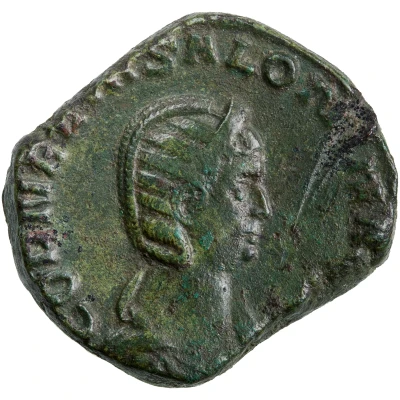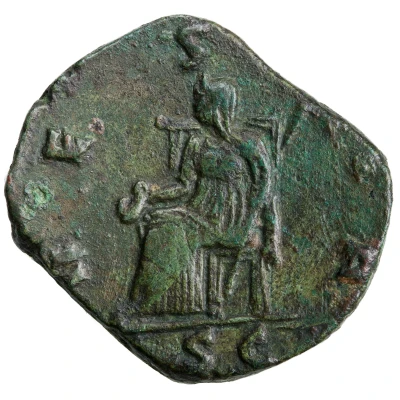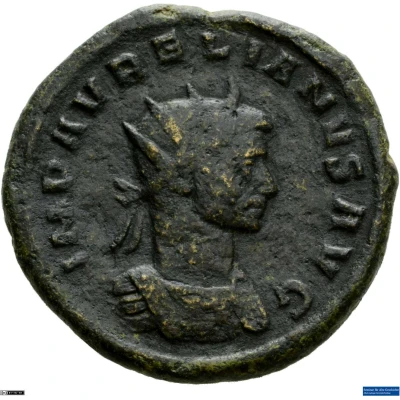Sestertius - Gallienus MONETA AVG; Tres Monetae
| Bronze | - | - |
| Issuer | Rome › Roman Empire (27 BC - 395 AD) |
|---|---|
| Emperor | Gallienus (Publius Licinius Egnatius Gallienus) (253-268) |
| Type | Standard circulation coin |
| Years | 263-268 |
| Value | Sestertius (⅛) |
| Currency | Antoninianus, Reform of Caracalla (AD 215 – 301) |
| Composition | Bronze |
| Shape | Round (irregular) |
| Technique | Hammered |
| Demonetized | Yes |
| Updated | 2024-10-05 |
| Numista | N#288991 |
|---|---|
| Rarity index | 100% |
Reverse
Tres Monetae, draped, standing, holding scales in right hand and cornucopiae in left hand; at their feet, piles of money.
Script: Latin
Lettering: MONETA AVG
Translation:
Moneta Augusti.
The mint of the emperor (Augustus).
Comment
Source:Online Coins of the Roman Empire (OCRE)
Interesting fact
One interesting fact about the Sestertius - Gallienus (MONETA AVG; Tres Monetae) coin is that it features a unique design that represents the three goddesses of fate, or "Tres Monetae," which were believed to control the destiny of Rome. The three goddesses depicted on the coin are Clotho, Lachesis, and Atropos, each representing a different aspect of fate: the past, present, and future. This design was meant to symbolize the power and importance of fate in Roman culture and mythology.



